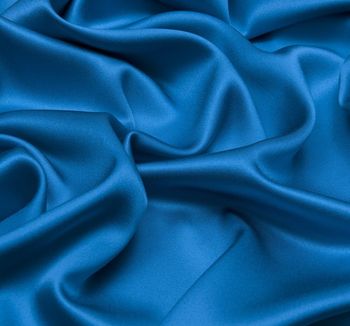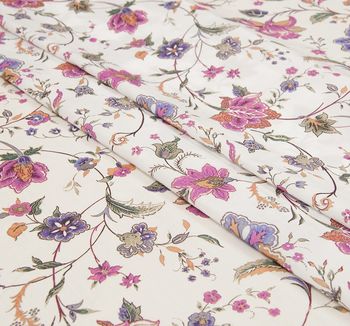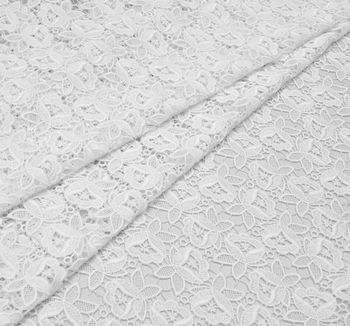Silk is a timelessly trendy natural fabric woven from the cocoons of silk worms. The world’s most famous fashion brands regularly apply it for various men’s and women’s outfits earning the admiration of the audience.
Lining Fabric for Clothing
- What Is It Used for?
- Lining, Underlining, Interlining — What's the Difference?
- Types
- What Is Cupro Lining and Why Is It So Popular?
- What is Bemberg lining fabric?
- What Exactly Is Silk Habotai Lining and When to Use It?
- How Do I Choose Lining Fabric for My Sewing Project?
- Which Lining Would You Recommend for Dresses and Suits?
Lining fabric refers to a group of materials inserted into various garments, from skirts and shorts to dresses, jackets and coats. Such fabrics can be made of natural or synthetic fibers and range from sheer to opaque.
While most of them are produced in solid colors, you can still find lots of patterned lining materials. This F. A. Q. section covers the most popular questions about lining fabrics, their types, and properties.
What Is It Used for?
The purpose of lining fabric is to make your garment more wearable, long-lasting and comfortable. They are usually lightweight and have a soft or silky texture. Not all items need to be lined, though. Here are some reasons why sewists turn to lining materials:
- To make the garment less see-through
- To add warmth and durability
- To make the inside part of the garment soft and pleasant to the touch
- To lend a luxury note to a garment
- To improve the structure of a garment
- To help the garment slide on easily
- To conceal seams, padding, interfacing, etc.
When choosing the appropriate lining for a project, one needs to pay attention to the stretch factor. If the garment is not stretchy, e.g. a cotton shirt or a wool jacket, non-stretch lining fabric is ok. But if the item is made with elastic materials like jersey, tulle or stretch satin, the lining one ends up choosing should be stretchy as well.
.jpg)
Lining, Underlining, Interlining — What's the Difference?
Sounds confusing, right? Actually, the puzzle is quite easy to solve! These are layers inside a garment that serve different purposes.
Lining is attached to the inner part of the garment to help keep its shape, hide the interior construction and facilitate the whole putting on/taking off thing. Interlining is added to a garment for extra warmth and insulation (some examples include fleece or flannel) and can be removable, in which case it is also called ‘a liner’. Underlining provides more body and opacity: it is cut for every pattern piece separately and attached to the wrong side of the outer fabric. Mind that the double layer material you get in this case is treated as one.
Types
Silk, viscose, acetate, polyester and rayon are among the most popular fibers used for lining materials. In many ways, the fiber type is the key factor: it influences the way your lining feels to the touch, the way it sews and drapes, its breathability and – last but not the least – the price point. Below are the types of lining cloths available on the market:
| Fiber Type | Pros | Cons | |
|---|---|---|---|
|
Natural fibers |
Silk lining |
|
|
|
Cotton lining |
|
|
|
|
Wool lining |
|
|
|
|
Artificial fibers |
Viscose and rayon lining |
|
|
|
Cupro lining |
|
|
|
|
Acetate lining |
|
|
|
|
Synthetic fibers |
Polyester lining |
|
|
Many lining fabrics are interchangeable, which means you can use various textures and compositions – it’s all up to your preferences and budget.
What Is Cupro Lining and Why Is It So Popular?
Cupro is a man-made fiber derived from the cotton linter. Developed in Japan, it resembles both silk and cotton, taking the best of two worlds. What exactly makes cupro so popular?
- It is durable
- It is breathable
- It is static-resistant
- It is silky smooth
- It is more affordable than silk
Cupro lining is often chosen for men’s jackets, vests and pants. Lightweight and silk-looking, it makes any wool suit (and wool is definitely the number-one men’s suiting fabric) super comfortable and breathable. Plus, it is an-all season fabric, cool in summer and warm in winter. The delicate shine it offers to the garment elevates the entire look while saving you money.
What is Bemberg lining fabric?
Bemberg is the most common Cupro brand. The two notions are often used interchangeably.
What Exactly Is Silk Habotai Lining and When to Use It?
Silk habotai, also known as China silk or pongee, is a featherweight silk fabric with a soft, smooth finish and elegant sheen. Due to its semi-sheer nature, habotai is mostly used to line delicate garments, such as summer blouses, skirts, dresses, lightweight jackets, pants, and kimonos.
Made of 100% silk, this thin fabric is not very durable, which means it is not suitable for close-fitting garments. To make the most of it, use it in full or loose silhouettes.
.jpg)
How Do I Choose Lining Fabric for My Sewing Project?
When sewing, we tend to pay more attention to the outer fabric rather than the inside. However, choosing the right lining is half the battle. It will make even the scratchiest garment comfortable to wear and hide all the flaws if there are any.
“Luxury is what cannot be seen” Coco Chanel
So, what is the best lining you can get for your item?
Take a closer look at your fashion fabric. The rule of thumb goes like this: the more lightweight your shell materials is, the more lightweight lining it requires. Heavier fabrics work well with various types of lining. Here’s a little piece of advice:
- Summer clothes like flimsy dresses, skirts, pants: choose cotton lining fabric for cotton garments (lawn, voile, or batiste) and silk lining for silk ones (habotai, chiffon, satin, crepe de chine). Viscose and rayon linings are also a great option.
- Evening gowns, skirts, velvet and brocade jackets: go with china silk, silk satin, silk crepe or taffeta.
- Suit jackets and trousers: try viscose, cupro or bemberg linings; silk is also a nice choice.
- Knit garments: opt for stretch linings, such as fine jersey or tricot.
- Fall and winter coats: for extra warmth, consider fleece, fake fur, Sherpa or quilted lining; for decorative purposes, try silk satin or acetate lining.
There are no strict rules you should follow when it comes to choosing the color of your lining material. Feel free to try several options until you find the one that fits the most. You may go with similar or complementary colors, e.g. a light blue or golden lining for a navy jacket, or swap to contrasting shades to add some zing. For a playful mood, try printed linings. The only recommendation would be to combine patterned linings with solid shell fabrics, otherwise it would be quite difficult to get it right.
Which Lining Would You Recommend for Dresses and Suits?
Each lining material has its pros and cons, and it’s very important to weigh all your options before making a decision. Whether you go with silk, cotton or acetate, make sure you buy a high quality lining fabric from the reliable manufacturer. This way, it will be durable, defect-free and colorfast. Here’s the best Tissura Online Shop can offer in terms of linings:
- Silk lining, stretch silk lining, silk habotai (perfect for couture apparel, jackets, slip-on dresses and more) – Belinac, France.
- Cupro and Bemberg lining (ideal materials to line suits) – Scabal, Belgium.
- Viscose and viscose/acetate lining (great for suits) – Dormeuil, France; Scabal, Belgium.
As they say in Asia, it's always better once see than to hear about it a thousand times. Below, we have selected some of the most alluring lining fabrics from our range:
Silk habotai fabric, 56 US$ (45 €) per one running metre
Silk habotai fabric, 56 US$ (45 €) per one running metre
Silk habotai fabric, 56 US$ (45 €) per one running metre
How to stay cool on a hot summer day? Wear fabrics built for the heat. Cotton, linen, viscose, silk – there are dozens of summer-friendly materials you can choose for your wardrobe. The best fabric to opt for when the temperature rises should be breathable and comfortable.
The wedding dress is one of the most important clothing items a woman gets to choose in her lifetime. It can be made of silk or cotton, lace or tulle, be strewn with sequins or embroidered with beads.
.jpg)
.jpg)
.jpg)


